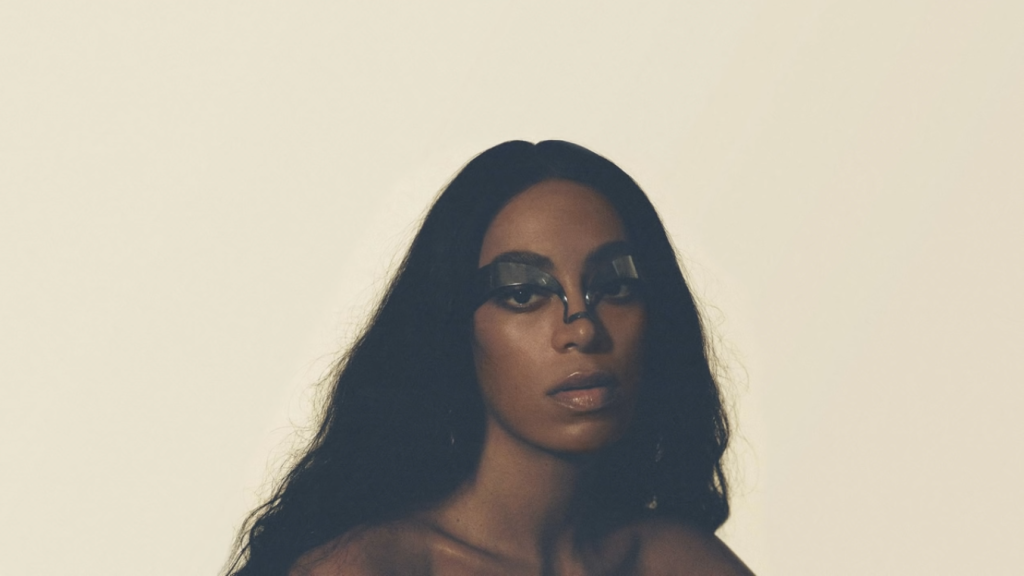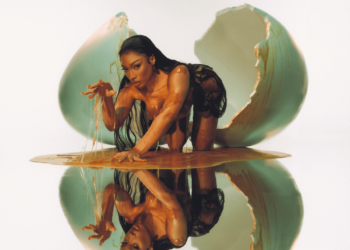The recognized solo fame Solange experienced throughout the recent years is lead by hard work and artistic self-disclosure: She in fact already had a whole journey in the entertainment industry. Starting off with stints for girl group Destiny’s Child and acting performances like in the 2006 ‘Bring It On’ sequel, Solange took the steps to find her own artistry in exploring different paths which lead her to a completely individual musical journey. Her Urban Pop debut ‘Solo Star’ from 2002 first introduced the artist as a standalone singer packed with famous producers like Timbaland, The Neptunes and Linda Perry – but nonetheless did not get the same recognition as her follow-up albums. Her second studio album, 2008s ‘Sol-Angel and the Hadley St. Dreams’ was liked for the Motown inspired sounds and vocals. When Solange showed her competence in lead single ‘I Decided’ with the colorful Soul Train inspired music video, it helped her getting recognizable attention, pushing her album to number 9 in the Billboard Hot 200. The retro and soul feels that ‘Hadley Street’ offers, eventually shaped the direction and artistic approach that she eventually found, starting off with her EP ‘True’ (2012) where lead single ‘Losing You’ offered new waves and alternative influences.
Her biggest success though was followed four years after – 2016s ‘A Seat at the Table’ that felt like an overnight sensation. The funky neo-soul approach where racial topics are discussed and analyzed was applauded by fans and critics. The concept album combines artistry with politics, supported by creative visualization in music videos for ‘Don’t Touch My Hair’ and Grammy-winning ‘Cranes in the Sky’. So while her third album ‘A Seat at the Table’ formed a new buzz for the singer/songwriter, fourth long-player ‘When I Get Home’ follows in the footsteps of the theme she established throughout the years. Even though hints for a 2019 record were already given, the album dropped as a surprise on March 1 without prior announcement – with a 33-minute film directed and edited by Solange herself. As the concept and the cover art is similar to her last album, this may give the feeling that ‘When I Get Home’ is continuing the direction of her 2016 LP. Let’s see if this is indeed the case.
Solange introduces the listener by repeating the song lines “I saw things I Imagined” in the short-cut opener – spacy, retro and euphoric – while the second track ‘S McGregor’ uses voice samples of actresses Debbie Allen (‘Fame’) and Phylicia Rashad (‘The Cosby Show’) to make links to the home area where she grew up: “And now my heart knows no delight/I boarded a train, kissed all goodbye”. As these two short openers act as a warm-up, the album officially starts off with ‘Down With The Clique’ with a dragging hook while ‘Way To The Show’ attracts attention with 60s and 70s Soul Train grooves. While Solange continues with poetic interlude ‘Can’t Hold the Mic’, expressing how there are ‘too many’ of any given subjects, the album then goes dreamy, relaxed and floaty with highlight track ‘Stay Flo’ who goes hand in hand with ‘Dreams’: Very old school R&B, reminiscent of the late 90s and early 2000s. Then, however, the outro of ‘Dreams’ creates disturbing sounds while the lyrics go “Sometimes I dream I’m in the four door, coming down on the slow-mo”. These spaced-out moments continue throughout the 19-track long-player, most notably in ‘Jerrod’ and ‘Sound of Rain’ – the latter having pop influences blended with chaotic sound effects that for some way or another make sense in this kind of creation.
Just like ‘A Seat at the Table’, her new album is also created as a whole picture of art instead of Single-ready tracks, filled with multiple interludes and shorts, like in intermission-track ‘We Deal With the Freak’n’: The interlude is presented as a conversation about the religious aspect of female empowerment – “The God that created you is a divine architect that created the moon, the sun, the stars, Jupiter, Mars, Pluto, Venus. We are not only sexual beings, we are the walking embodiment of God consciousness.” Other short tracks in between, like ‘Nothing Without Attention’, ‘Beltway’ and ‘Exit Scott’ are presented as experimental in-betweeners, either recorded as a mash-up with (sometimes private) voice clips, repetitive lines or short instrumentals of keyboard or strings. Lyric-wise Solange follows the theme of racial identity in ‘My Skin My Logo’, numerates brown and black aspects in ‘Almeda’ (“brown sugar, brown skin, brown face, black skin, black braids”), and then changes up the rhythm in ‘Time (is)’, where she switches the flow in between, to underline seriousness, giving feels of a Kendrick Lamar song. On the other side, ‘Binz’ cools off with a nice retro feel-good vibe, like a 70s summer in art pop. A downer however is that the song is cut short out of the blue, being under 2 minutes long. A bummer, as it disturbs the nice movement of the song and could’ve been a bigger highlight otherwise. These surprise cuts and directions continue throughout the album, intended for surprise ups and downs. The album then eventually ends with electronic guitar jams in interlude ‘Not Screwed!’ followed by 1:51 minute outro song ‘I’m a Witness’ to end the artistic project.
Solange creates an entrance of her own world. Certain lyrics and melodies may connect with Joni Mitchell, and certain musical structures remind of Prince’s experimental phases, but she yet created a style that makes her unique in the music scene of the 2010s. If you liked her last album ‘A Seat at the Table’ and her EP ‘True’, there is a high chance of also having a connection with ‘When I Get Home’, because it follows the direction she aimed before. In comparison to ‘A Seat at the Table’ though, where most parts have distinct messages and opinions, her new effort’s lyrical content sometimes seems vague at first, as if she wants to challenge the listener to interpret the meaning of the lyrics on their own. The album’s artistic and experimental approach still represents R&B and Hip-Hop and also quietly invites urban artists like Cassie, Devin the Dude or Panda Bear to sing along in the background (or Tyler, the Creator who adds some keyboard sounds while also giving some harmonies). Very signature Solange, as she loves to let other artists have an imprint of her album as well, like on her last album when she invited singers Tweet, Kelly Rowland and Nia Andrews, and many others, for some additional background vocals.
As much as daring her style is, the effort and artsy aspect may label ‘When I Get Home’ as sophisticated and kind of ‘protects’ the album, therefore making it harder to not applaud the effort. The other side, however, is that ‘When I Get Home’ and ‘A Seat at the Table’ sonically sound very similar, as if the albums are divided in Part 1 and Part 2. That does not have to be a bad thing as Solange found her own niche, but also makes it repetitive. This said, it’s also not very clear if the similarities from ‘A Seat at the Table’ were either coincidental or trying to follow up the trace of success she had. While her former album got an organic feel to it, ‘When I Get Home’ feels as if there was an idea first – tying in her previous album, and giving the impression as if she was pushing herself to be more experimental than before. Solange has talent for sure, and works the best when letting loose and taking time with each project. It does, however, not feel like a new chapter, but rather a follow-up. Like a ‘missing tracks’ compilation from her last album. But then again, the album is still a creative product of its time. Great for fans and music lovers.
Highlight Tracks:
Stay Flo
Almeda
Binz
Full Track List:
1. Things I Imagined
2. S McGregor (interlude)
3. Down With the Clique
4. Way to the Show
5. Can I Hold the Mic (interlude)
6. Stay Flo
7. Dreams
8. Nothing Without Intention (interlude)
9. Almeda (guest appearance by Playboi Carti)
10. Time (is) (guest appearance by Sampha)
11. My Skin My Logo (guest appearance by Gucci Mane)
12. We Deal With the Freak’n (intermission)
13. Jerrod
14. Binz
15. Beltway
16. Exit Scott (interlude)
17. Sound of Rain
18. Not Screwed! (interlude) (guest appearance by Standing on the Corner)
19. I’m a Witness













